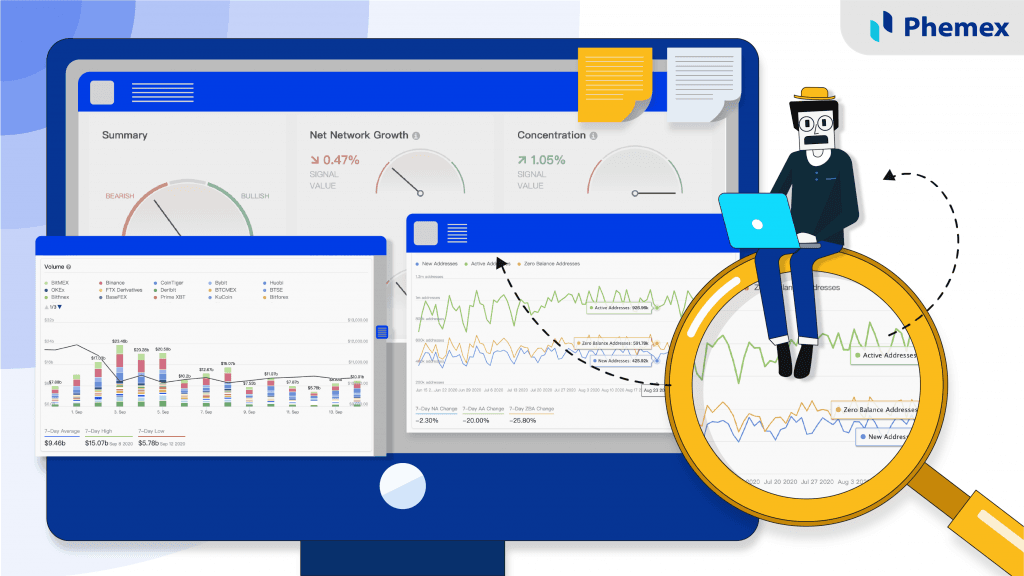Summary:
- Risk reversals are market-neutral trades used in options trading to balance out the risk by purchasing options in the opposite direction i.e. if we’re long on an asset, we can purchase short options to balance out the risk.
- The investor benefits from a risk reversal trade by selling options prematurely if the trade goes right and keeping the profitable options–this eliminates the risk of a total loss in trading, while protecting his upside.
- Risk reversal trading is used to de-risk leveraged trades, enter a position before a rally, or minimize risk during a trending market. In other words, it helps to account for market volatility.

Leverage trading crypto is risky because the trade can induce a loss if the price moves against our position by a certain percentage. Higher leverage decreases the liquidation safety net. For example, a trade position with 100x leverage will take just a price movement of just 1% to trigger a liquidation, whereas a 10x leverage will take maybe 5%.
If we’re trading Bitcoin (BTC) options, but we’re not sure the trade is going to be successful, what are the top safety precautions?
One technique that is well-known for hedging trades is the “risk reversal” strategy. Risk reversal allows us to de-risk our position by opening a trade in the opposite direction – so that we’re covered no matter the outcome.
In a risk reversal trade, a trader purchases long options (calls) and short options (puts) that expire in the same month. Their leveraged position is covered because they are minimizing their risk in case the trade results in a loss.
Risk reversals can be implemented in crypto trading if the platform supports options or contract trading. In this guide, we’ll cover the principles of risk reversal trading and how you can implement it in your day trading strategy.
What Is Risk Reversal?
Risk reversals are market-neutral trades where the risk is evened out. In a risk reversal trade, the trader spreads their capital by investing 50% in long option calls and 50% in short option puts. This limits their downside regardless of the price action, but it also limits their profit potential.
For example, in a long risk reversal a trader could purchase 100 Bitcoin calls and 100 Bitcoin puts. The expiry date, or “maturity”, of these two options should be identical. A bullish risk reversal basically implies we have a long trade which is countered by a short trade.
The trade guards us against volatility and the value of these options is measured based on the volatility in OTM (out of the money) options. As brokers know the price will be even in both cases, their quote is based on the volatility.
If we have an OTM long call with 20% volatility, we might need an OTM put with lesser volatility. The difference in volatility provides coverage up to a certain range and allows us to make a profit.
In a bullish risk reversal, the trader will be looking to sell their short put options as the price is moving up and retaining the calls. In a bearish risk reversal, the trader will be selling their long calls and holding onto their puts.
As a market-neutral strategy, it also limits the upside potential. This is why a trader should implement it before the start of a trending market and sell the negative position to maximize their PnL.
The risk reversal strategy is also known as a “synthetic trade” because it mimics actually owning a spot asset. If we buy Bitcoin on the spot market, we make a profit or lose money but we’re never at a total loss.

When Do You Need A Risk Reversal Strategy?
In the crypto markets, a risk reversal strategy is should be implemented for the following:
- Leverage Trading: If you’re leveraged and could potentially lose a lot of money, de-risk by hedging your trade in the opposite direction. This strategy could be applied to crypto futures trading by buying contract options in both directions.
- Sideways Markets: Bitcoin is mostly sideways with little volatility before it enters a bull market or a bear market. This is the ideal time to hedge because you don’t know a clear direction, and you minimize your chance of losing money at the start of the cycle.
We can be bullish or bearish about the future of the crypto market, but if we’re uncertain about the future direction, hedging is the way to go.
How to Calculate Risk Reversal?
Calculating a risk reversal is easy because we need calls and puts of similar value and expiry dates. What matters most is the volatility level of the option we’re trading. Let’s say we purchase Bitcoin options with a volatility delta of 30.
In this case, we could use this formula:
- RR30 = 30 Delta Call – 30 Delta Put
“RR” stands for “Risk Reversal” and the deltas are the individual options and their volatility ratings. If we’re long Bitcoin and believe it’s going to move up more than down, we can simply increase our call position more than our short position.

What Is A Butterfly?
A “butterfly” position is slightly harder to execute and involves a regular risk reversal trade with OTM options (i.e. 1 OTM long call and 1 OTM short put) and two ATM options.

A long butterfly with profit/loss potential. (Image Source: Rothko Research)
The butterfly specifies the distance between the delta volatility of the OTM options and the ATM moneyness.
To learn more about moneyness and the difference between ATM and OTM options, visit this guide.
Conclusion
Risk reversal trading strategies are common in the stock markets where traders use options to maximize their profits. The problem with options is that there is leverage involved, and traders need protection against volatility because they stand to lose more due to liquidation risk.
To repeat, risk reversal trading is a market-neutral strategy, and as such, it also limits the upside potential. This is why a trader should implement it before the start of a trending market and sell the negative position to maximize their PnL.
If we’re long on crypto, we can implement this strategy by purchasing contracts on the futures market that go in the opposite direction of our trade. That way we’re covered regardless of the price action on the spot market and the direction of the trend.
Read More
- Hedging Bitcoin: 5 Risk Management Strategies in Crypto Trading
- How to use The Trend Reversal Trading Strategy: All you Need to know
- What is Risk/Reward Ratio in Crypto: A Powerful Trading Tool for Beginners
- Pullback vs. Retracement vs. Reversal: What Are The Differences?
- What Is A Covered Call: How to Lower Risk in Bitcoin Leverage Trading
- How to Use Risk Parity in Crypto Trading
- All About Reversal Candles: How to Read and Trade
- How to Short Bitcoin (BTC)? Steps, Benefits & Risks Explained









